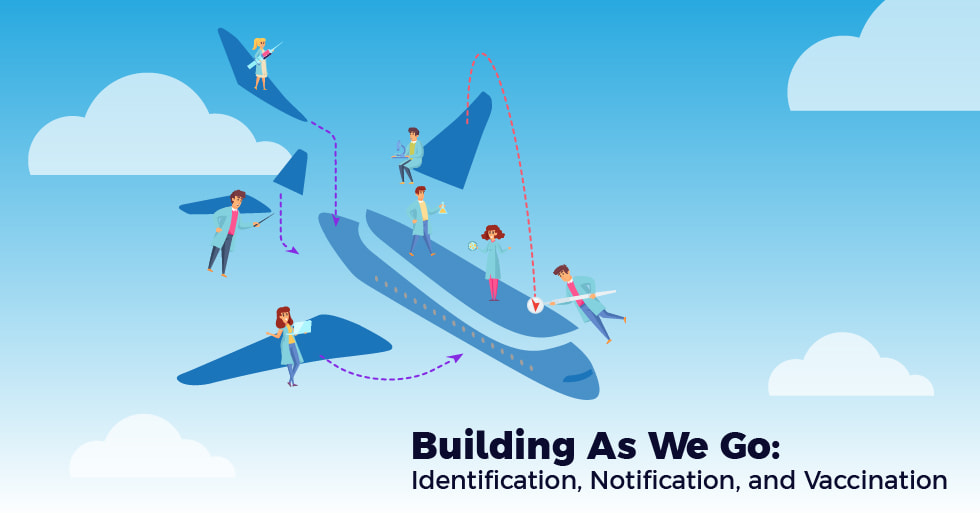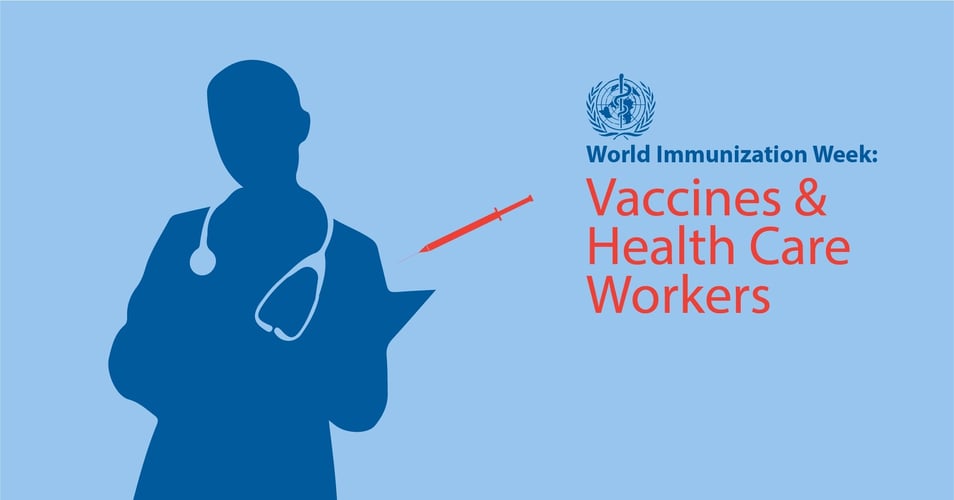Building As We Go: Identification, Notification, and Vaccination

 The sheer number of people who need to get vaccinated and the logistics involved in making that happen has led to frustration and confusion. Some states appear to be doing well, while others are floundering. In many ways, we are building a plane while flying it through the air, subject to turbulence, storms, and surprises along the way. In today's post, we'll look at the three key elements of vaccine roll-out: Identification, Notification, and Vaccination.
The sheer number of people who need to get vaccinated and the logistics involved in making that happen has led to frustration and confusion. Some states appear to be doing well, while others are floundering. In many ways, we are building a plane while flying it through the air, subject to turbulence, storms, and surprises along the way. In today's post, we'll look at the three key elements of vaccine roll-out: Identification, Notification, and Vaccination.
The last time there was a massive vaccine roll-out was in 1955, when polio vaccines were administered to millions of American children and adults. An effective polio vaccine was first developed in 1952, however; first trials didn't conclude until 1955. In contrast, the COVID-19 vaccine has been heavily funded in order to get from the discovery of the novel coronavirus to effective vaccines in a stunningly short time - 10 months. Roll-out of this vaccine has not gone as smoothly as we hoped.
While the scientists behind the vaccine have been working to perfect a serum that will activate our immune systems and protect us from the virus, the folks in charge of getting people mobilized to distribute the vaccine have been less effective. A huge part of the confusion is that each state has been trying to determine its roll-out independently, with some guidance from other states' approaches. This state-centered approach is deeply grounded in our country's notion of federalism, that is "federally supported, state-managed, locally executed." Over the next months, the definition of "federal support" may become more specific, but for now, all efforts are focused on the three main steps of Identification, Notification and Vaccination.
IDENTIFICATION: The CDC has identified who should get the vaccine in what order. Healthcare workers, the elderly population, and front-line workers come first, followed by adults with health conditions, and finally healthy adults. Some states decided to follow those CDC guidelines while others did no, with some states deciding instead to open up vaccines to the elderly population first, or not including front-line workers in the first wave.
NOTIFICATION: In this step, the confusion has been overwhelming. Individuals are struggling to find where to sign up to get notified, online systems have crashed, and some individuals without internet access have been left out altogether. People have figured out how to give away their vaccine appointments to those not yet identified for vaccine, or have driven across state lines to get vaccines in a place with first-come, first-served clinics (no appointments necessary). There is no single, central place to register for an appointment, which has brought tremendous frustration to many. [There was an attempt at one, the Vaccine Administration Management System (VAMS), but it failed.]
VACCINATION: This should be the easy part, right? However, there are issues with getting enough supplies to where they are needed, difficulties with getting an older population to complete the required paperwork, and even convincing large swaths of the population that the vaccine is safe. Some minority populations, still wary after a history of unethical medical procedures at the hands of the federal government, do not trust the vaccine, and yet are disproportionately affected by COVID-19. In addition, reserving second doses rather than giving them to new patients (and trusting the second doses will be delivered) has slowed down vaccination as well. Getting shots into arms is still a huge challenge nation-wide.
What can we do to help with this massive vaccine roll-out? Those of us who have access to information and technology should reach out to those who do not. We can help older relatives and neighbors get registered for a vaccine and make sure they get to the vaccine site. We can speak confidently about the value and safety of the vaccine to those who are questioning it, both in person and online. And finally, we can keep wearing masks and maintaining social distancing until we have achieved herd immunity, when 60-70% of our population has gotten the vaccine.
![EOScu Logo - Dark - Outlined [07182023]-01](https://blog.eoscu.com/hubfs/Eoscu_June2024/Images/EOScu%20Logo%20-%20Dark%20-%20Outlined%20%5B07182023%5D-01.svg)




